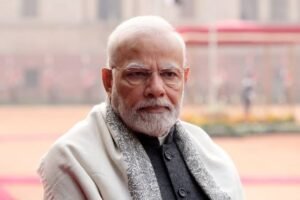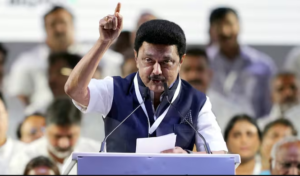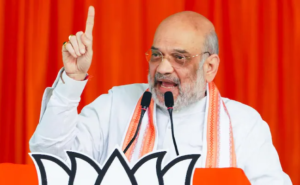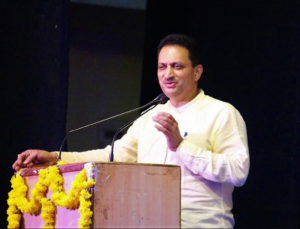Chandrayaan, Aditya have economic benefits as well: former ISRO scientist

Space missions like Chandrayaan or Aditya result in very tangible benefits in economic and investment terms as well.
Space missions like Chandrayaan or Aditya deliver not just technological and strategic advantages to the country, they result in very tangible benefits in economic and investment terms as well, Mylswamy Annadurai, one of the leaders of the Chandrayaan-1 and Mangalyaan missions, said. “One very direct impact, which is already becoming visible, is on India’s ability […]
Space missions like Chandrayaan or Aditya deliver not just technological and strategic advantages to the country, they result in very tangible benefits in economic and investment terms as well, Mylswamy Annadurai, one of the leaders of the Chandrayaan-1 and Mangalyaan missions, said.
“One very direct impact, which is already becoming visible, is on India’s ability to attract and retain technology talent. Successful missions like Chandrayaan, Mangalyaan or Aditya ensure that India is a seen as a destination that offers serious opportunities in space research and technology sectors. Space is already being seen as a serious alternative to IT (information technology) for the brightest of minds in India,” Annadurai, who was project director of Chandrayaan-1, said in an interview.
“For people wanting to make a career in space or aerospace, the United States or Europe was the place to go to. But that is changing. It began with Chandrayaan-1 itself, and has been gaining momentum in the last few years. The moon landing and Aditya mission will accelerate this process. Youngsters in the aerospace industry now see India as a place where they can do all kinds of high-end work and thrive. It is this talent that is driving the rapid growth of the private space industry in India. People are coming in to invest. ISRO is benefitting too. In fact, the interest in ISRO has grown phenomenally. Just check with ISRO… the number of applications it receives every year,” he said.
Incidentally, some private space entrepreneurs had also expressed similar sentiments in recent conversations with The Indian Express. Srinath Ravichandran, co-founder of Agnikul Cosmos, a space start-up which is striving to make launch systems, had said the (credibility that ISRO earns internationally with missions like these rubs off on the private industry as well.
“(Missions like Chandrayaan-3) build more credibility for our space programme. That means investors, vendors, customers, everyone in the outside world begins to take Indian space technology more seriously. Agnikul is not ISRO. But if ISRO does something amazing, and if people know that ISRO and Agnikul work together, that credibility rubs off on us… When I came back from the US in 2017, it was still a little less common to do so, but ever since my own return, I have seen lots of people coming back. Suddenly it is not so bad for people in aerospace to get back to India and work here,” Ravinchandran had said.
Annadurai said the key to maintaining this momentum was for ISRO to keep doing these kind of space missions at regular intervals.
“Mangalyaan happened five years after Chandrayaan-1. Then Chandrayaan-2 took another five-six years, and now Chandrayaan-3 went four years later. It took time for ISRO to build capabilities, master certain technologies. In recent times, COVID also upset schedules. But now you will see these kind of missions being done more frequently. And this is very good for the space sector, for young technologists, and certainly for the country,” he said.
The former ISRO scientist said space technologies were emerging as one of the most marketable offerings from India in its diplomatic dealings with other countries.
“There are very few countries with these kinds of capabilities in space sector. Among the developing countries, there are even fewer. So, our space technologies and space infrastructure are quite sought after. I am aware of at least three sessions that have been conducted for representatives of other countries… they were told about India’s space programme, its infrastructure, its capabilities and the benefits that these technologies offer. About 30 countries have shown interest in learning, collaborating, and buying. This is a huge market, not just for ISRO but also for our private industry. It brings us revenue, goodwill and strategic advantage,” Annadurai said.
Annadurai said the growing complexity of space missions was a catalyst to closer collaboration among the space-faring nations. He said it was very likely that space agencies and companies would eventually develop core expertise in certain areas and seek help in others.
“Space requires expertise across many specialities. No one is good at all of these, not even NASA. And if people are forced to do it alone, it would be an inefficient way of doing it. This will force countries and space agencies to collaborate with each other more closely. We are already witnessing this trend. But we will see more of this in the coming years. And that is how we can quickly solve the future challenges. Setting up a permanent station on Moon, for example, is beyond the resource capacity of any one nation. But it is not just resource, there are differences in capabilities as well,” he said.
“For example, ISRO’s weakness is the lack of a heavy lift rocket. That is why a spacecraft like Chandrayaan-3 or Aditya has to take a circuitous route, orbiting the Earth a few times to gain momentum before embarking on the real journey. It takes us more time, but is something that we are able to do with remarkable accuracy. And it serves us well, saves us costs. And there is nothing wrong with it. There is no particular hurry to reach a destination in space. I do not think we need to develop heavy rockets just because we want to reach the Moon or some other place quicker. We can just hitch a ride on other’s rockets if there is such a need. In return we can offer other services. ISRO’s strengths are in remote sensing, communication and navigation, in development of autonomous systems, and yes, in these orbit manoeuvres as well,” he said.
Annadurai said recent developments in which space-faring nations seem to be getting divided into two competing blocks, one led by the United States and the other comprising mainly Russia and China, was unfortunate, and needed correction.
“That is not the way to go,” he said.
“It would be in the interest of all to pool in their resources and capabilities. There are big challenges ahead. The immediate one, which has become quite clear now, is to go to the Moon, create conditions for setting up a permanent station that can facilitate research, explore opportunities for utilisation of resources, and then use it as a platform for going much deeper into space. Competition amongst the space-faring countries can delay the schedules. Collaboration is the way forward,” he said.





